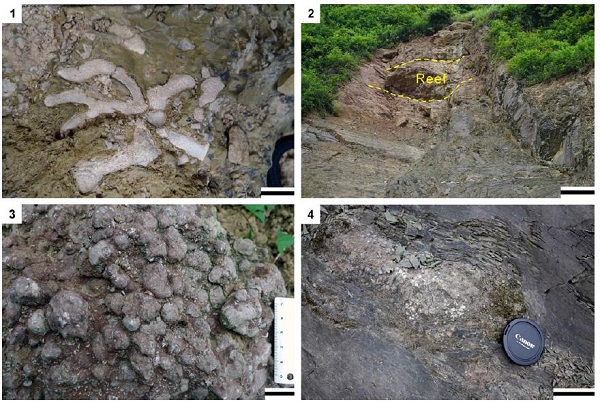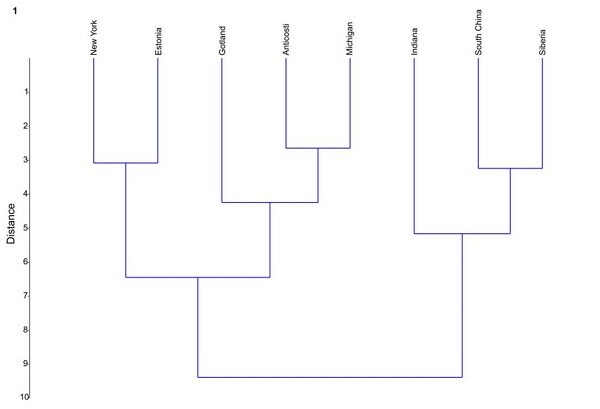Fossils of about 15,000 bryozoan species have been found. Bryozoans are among the three dominant groups of Paleozoic fossils. The oldest species with a mineralized skeleton occurs in the Lower Ordovician. The Early Ordovician fossils may also represent forms that had already become significantly different from the original members of the phylum. In Silurian, bryozoans notably declined and were dominated by trepostome bryozoans. Bifoliate cryptostomes were also abundant and diverse in Silurian communities.
Cooperated with Dr. Andrej Ernst of the Hamburg University and Prof. Axel Munneck of the Erlangen University, Dr. LI Qijian from Nanjing Institute of Geology and Palaeontology, Chinese Academy of Sciences (NIGPAS) leaded and conducted a study on Bryozoans from the lower Silurian (Telychian) Hanchiatien Formation from southern Chongqing. Related results have been recently published online in the International Journal Journal of Paleontology.
There are eight bryozoan species in those small reefs. Four species are new: the trepostomes Asperopora sinensis n. sp., Trematopora jiebeiensis n. sp., and Trematopora tenuis n. sp., and the fenestrate Moorephylloporina parvula n. sp. One species, the cystoporate Hennigopora sp. indet., is described in open nomenclature.
The fenestrate bryozoans are eurytopic, occurring in all types of facies within the bioherms. Erect bryozoans formed pioneering communities on weakly cemented substrata, whereas encrusting fauna occurred on hardgrounds and formed densely compact framestones. Robust branched bryozoans tend to occur out of the reef core (Fig. 1) where they could have formed reef-flank thickets in more agitated conditions. The generic composition of the studied fauna correlates with other localities in South China, and they show general paleobiogeographic relations to Siberia and Indiana, USA (Fig. 2).
This study was financially supported by the Youth Innovation Promotion Association, the National Natural Science Foundation of China, and the Chinese Academy of Science. This study is a contribution to the IGCP-653 ‘The onset of the Great Ordovician Biodiversity Event’ and the IGCP Project 668 ‘The stratigraphic and magmatic history of Early Palaeozoic equatorial Gondwana and its associated evolutionary Dynamics’.
Reference: Ernst, A., Li, Q.J., Zhang, M., & Munnecke, A. (2020). Bryozoans from the lower Silurian (Telychian) Hanchiatien Formation from southern Chongqing, South China. Journal of Paleontology, 1-16. (DOI: https://doi.org/10.1017/jpa.2020.86).

Fig 1.Field aspects of the studied section: (1) the flank facies of the second reef horizon, showing the branched bryozoan Trematopora; (2) the core facies of the second reef horizon; (3) plan view of the framestone, showing bulbous and knobby colonies of the first reef horizon; (4) the flank facies of the first reef horizon. Scale bars = 2 m (2); 8 cm (4); 2 cm (3); 1 cm (1).

Fig 2.Paleobiogeographical affinities of the studied bryozoan association and selected Telychian bryozoan faunas.
Download:
